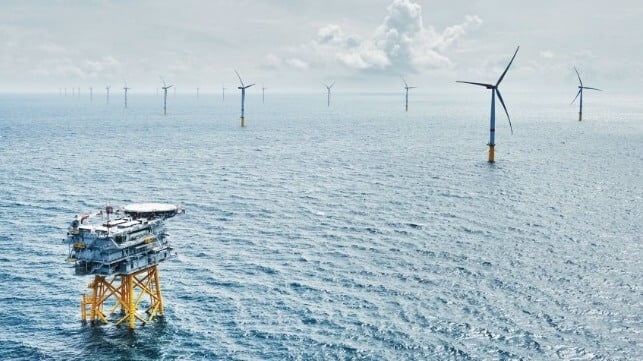North Sea Countries to Coordinate Tenders to Reach 100 GW of Offshore Wind

Nine Northern European countries jointly approved a new North Sea Energy Cooperation Action Agenda designed to better coordinate their efforts and support the next phase of the development of offshore wind energy in the North Sea. Meeting in The Hague, the countries set out a plan that they say will increase predictability, create better coordination, and lead to an integrated energy system in 2050.
The North Seas Energy Cooperation (NSEC) has strong ambitions for offshore energy looking to build on the early development and leadership in wind energy both onshore and offshore in the region. The group, which includes Belgium, Denmark, France, Germany, Ireland, Luxembourg, the Netherlands, Norway, and Sweden, was joined by the European Commission as well as the United Kingdom attending as a guest.
Their plan calls for auctioning around 15 GW of offshore energy capacity each year. By 2030, the goal is to award almost 100 GW and they believe this can be achieved by better coordinating their efforts and resources. The participants believe that the North Sea has the potential to be the “Green Power Plant” for Europe.
“Our discussions today showed the joint determination and commitment to continue the work to deliver on our offshore ambitions, and to take the work forward to boost the competitiveness of this vital sector,” said European Union Commissioner for Energy Kadri Simon.
Their efforts are in part in response to the emerging challenges for the industry identified by the participating countries during two meetings held this year. They acknowledged that the offshore wind sector is increasingly experiencing challenges such as high inflation and increased resource prices, limited availability of labor, and complex licensing systems. They noted a recent study carried out by Royal HaskoningDHV that also indicates that without additional common action, the current and planned capacity of harbors surrounding the North Seas is insufficient to reach the targets of 2030.
Among the specific steps identified in the action plan is collective tender planning by NSEC participants. They are also calling for closer cooperation among member states of the EU and the industry to address the current challenges. The NSEC countries also committed to better coordinating their infrastructure planning at sea.
They believe their efforts at coordination and cooperation will increase predictability in the wind power sector. As an example, they said it will facilitate better cooperation and coordination of cables, pipes, harbor infrastructure, and access to resources. They believe it will also help the European wind power sector with its mid- and long-term financial planning.
The agenda was presented to the European Union and as a next step in January 2024, the European Network of Transmission System Operators for Electricity (ENTSO-E), will publish a shared plan for infrastructure in the North Sea. The plan includes input from NSEC countries and takes into account the need for a fair balance with other sectors and users in the North Sea, such as the fishing and transport industry.
Participants in the meeting on November 20 agreed that this is an important step on the road to a European integrated energy system in 2050.
